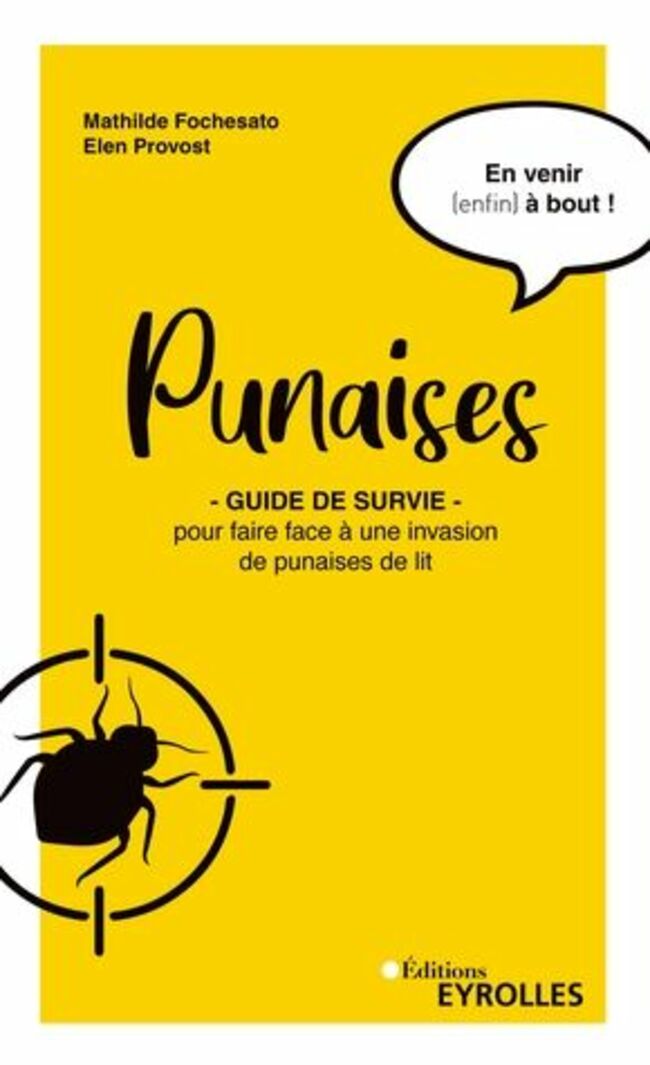It’s impossible to miss bedbugs: the subject is the subject of multiple decipherments after videos of these undesirables, observed on public transport or even in certain cinemas, were published on social networks.
Although everyone has already heard of this scourge, there are still many preconceived ideas surrounding bedbugs. Mathilde Fochesato, author of “Bugs: Survival guide for dealing with a bedbug infestation” (ed. Eyrolles, 2020), takes stock.
“Bed bugs are not visible to the naked eye”
FAKE. Adult bed bugs are 5 to 7 mm long, red-brown in color, and shaped like an apple seed or lentil. These pests are therefore widely visible to the naked eye. The common misconception that bedbugs are invisible probably comes from the fact that they live at night and it is therefore rare to be able to observe them during the day.
“They only infest beds, which explains their name”
FAKE. It is true that bedbugs live closer to their sleeping victims, because it is easier for them to bite them at night and feed on their blood. We therefore find them mainly on mattresses and box springs but also all around the bed, on rugs or bedside tables.
But these pests also live outside the bedroom, in places where we stay long enough for them to have time to bite us and feed, such as the sofa and armchairs in the living room or even the car. Bed bugs can actually crawl everywhere and hide in all the dark corners of the house, such as baseboards, electrical outlets or even picture frames.
“Bed bugs only invade homes with questionable hygiene”
FAKE. Unlike other pests like cockroaches, which can feed on food scraps or dirt, bed bugs feed solely on human blood. They are therefore attracted by places where humans live and not by the lack of cleanliness of housing.
This is the reason why you can find them anywhere : from luxury hotels to private apartments, including cinemas and public transport.
“Insecticide sprays are effective in combating this undesirable”
True and false. Commercially available insecticide sprays can be helpful in controlling bedbugs, but are always less effective than products used by certified pest control companies. The other particularity of these sprays? They are toxic and handling them can be dangerous to your health.
“Recourse to a professional is enough to eradicate them”
FAKE. Faced with a bedbug infestation, it is necessary to take a certain number of actions. In addition to calling on a professional to benefit from disinfestation with chemical products, it is also advisable toeliminate bedbugs manuallyby vacuuming, regularly washing bedding or even cleaning infested objects and rooms.
To do this, you should rely on heat or cold. It is therefore possible to rent a steam cleaner or a heating box. Textiles, for their part, can be put in the washing machine, at 60°C minimum, or in the freezer, at -18°C.
“Getting rid of bedbugs is always laborious”
True and false. The older the bedbug infestation, the more likely it may be difficult to get rid of these pests. The configuration of the accommodation can also make this task more or less complex: if the parquet floor is old, this particularity increases the possibilities of hiding places for bedbugs, which can complicate eradication.
The same applies in the case of a common wall with a neighboring house or apartment: the other inhabitants must also treat their accommodation, which makes the task more difficult.
“It is essential to throw away your bed and mattress in the event of an infestation”
FAKE. We often hear that the first thing to do when faced with a bedbug infestation is to throw away your bedding. However, this is a preconceived idea: since these pests can invade different areas of the house, it is no need to separate from your bedespecially if the disinfestation is still in progress and you are not sure that you no longer have bedbugs.
To avoid being bitten while sleeping, it is nevertheless advisable to cover your mattress with a special cover which traps these insects. Once eradication is complete, there is no point in throwing away your mattress either, although it may be tempting. To reassure yourself, it is possible to reinforce disinfestation by carrying out, for example, a new steam treatment.
“Bed bugs can transmit diseases”
FAKE. Currently, no studies prove that these pests can cause diseases. However, a bedbug infestation can have adverse effects on physical health, but also mental.
The bites of these pests can therefore cause significant itching, or even sometimes serious allergic reactions. The psychological aspect is not negligible: an infestation of bedbugs can cause anxiety, social isolation, sleep disorders, even depression.
“Bed bugs only bite at night”
True and false. Bedbugs are nocturnal insects, but they can also sting when it is lightin dark places like movie theaters or cars.
“We can take precautions to avoid an invasion”
TRUE. For avoid bringing in bedbugs At home, it is advisable not to pick up furniture in the street and to carefully inspect furniture purchased second-hand, at flea markets for example.
It is also recommended to check your suitcase carefully when returning from a trip, especially if you have gone to a youth hostel, rental accommodation located in a large city or even a mountain refuge.
The idea? Try to spot a bedbug or, failing that, droppings. If in doubt or if you have been stung during your trip, you should place the contents of your suitcase in a trash bag and put it in the freezer.
Thanks to Mathilde Fochesato, author of “Bugs: Survival guide for dealing with a bedbug infestation”published by Eyrolles.
Read also :
⋙ Bedbugs: the 8 most infested regions of France
⋙ How to get rid of bedbugs: expert advice to eradicate them
⋙ Bedbugs: 6 signs that should alert you to their presence
